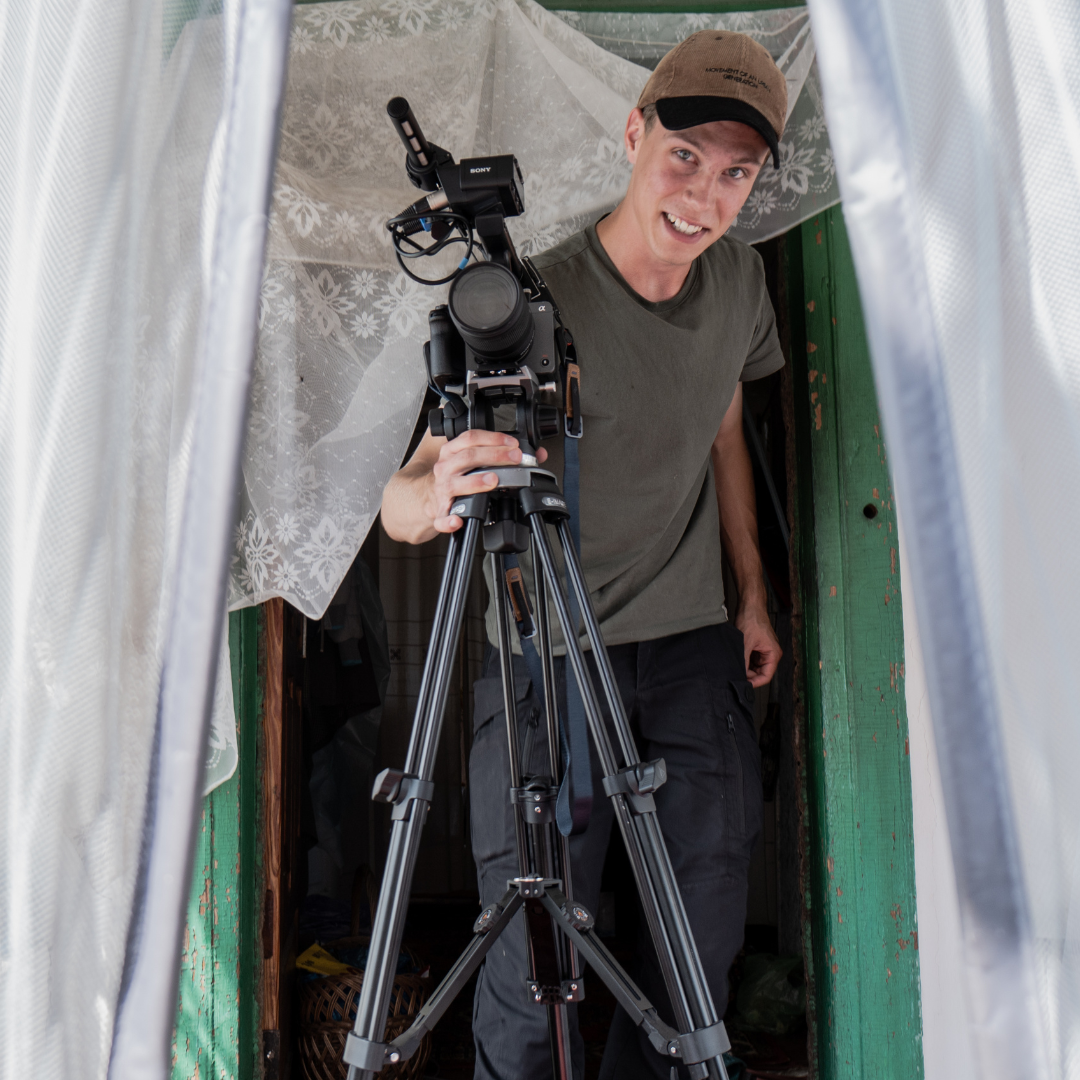
“We used to be a niche outlet that reported on culture, creative industries, and innovation in Kharkiv,” says Olena Myhashko, “On 24 February 2022, we faced a tough choice on what to do next.”
“We decided to change our focus,” she adds, “We moved away from being solely a niche media and instead raised awareness among the wider society about what was happening in Kharkiv as large columns of Russian troops were crossing Ukraine’s border.”
Olena is the editor-in-chief at Gwara Media, based in Kharkiv, Ukraine’s second-largest city. Kharkiv is only forty kilometres away from the Russian border, and it remains highly vulnerable to constant missile attacks from the Russian troops stationed nearby.
In the early days of Russia’s full-scale invasion of Ukraine, the city was especially threatened – as Russians captured towns and villages around Kharkiv, and there was an imminent risk of occupation.
“We remained in the city and continued working when the war started,” says Serhii Prokopenko, Gwara’s managing editor, “Our office was destroyed, and we had to work from basements. Despite this, we started changing and growing, and we had people inside and outside of Kharkiv reporting for us.”
In a year and a half, Gwara grew from four to 22 full-time journalists and launched one of the most important fact-checking units in the country. It also significantly expanded its reach and it is now widely read across Ukraine and abroad.
“In March 2022, it was unusual for a niche media like ours to carry out fact-checking projects and to launch an English-language version,” Serhii says.
Gwara had been breaking ground even before the full-scale war – primarily by establishing itself outside of Ukraine’s capital and reporting on topics usually overlooked by mainstream media.
However, when the Russia’s invasion of Ukraine took place, the newsroom realised: a culture-oriented platform would not survive in this environment.
“We saw that a niche media like ours could not exist in Kharkiv at that time because it was so dangerous,” Olena explains, “If we were to stay and continue coverage, we knew we needed to focus on other things besides culture.”
This is when the team decided to undergo a major transformation – and report on something they never planned to work on. Instead of writing long-reads of artists and innovators, Gwara’s journalists began creating multimedia content on how the war affected their city, began fighting off fake news about the invasion, and started producing fast-paced news pieces.
“It was important to document Russian war crimes and the horrors caused by the invading army in our region,” Serhii says, “We did this when Russians were stationed right next to Kharkiv, and are still doing it now even though only 2-3% of the Kharkiv region remains under occupation. There is a general shift in focus away from our region and it’s important to bring the occupied territories back to the public's attention because Ukrainians are still living there.”
The team now attracts over 300,000 readers a month thanks to its war coverage in Kharkiv.
“We are among the five biggest regional media in Ukraine,” Serhii adds, “We are unique because we also publish in English. It is very important for Ukraine to get help and understanding from abroad, so we produce exclusive content for foreigners to know what’s happening here.”
With Russian troops stationed so close from Kharkiv, the Kremlin upped disinformation attacks against the local population. Residents were constantly targeted with fakes on the potential attacks, evacuations, and other war-related issues.
“That’s why we launched our fact-checking bot ‘Perevirka’,” Olena says. ‘Perevirka’ means ‘verification’ in Ukrainian, and the bot has now been used by more than 50,000 people.
“It is an innovative instrument where readers send us information to verify,” Serhii explains, “It became a foundation for developing one of the most important fact-checking solutions in the region. This year, we became the only regional media in Ukraine to be part of the International Fact-Checking Network of the Poynter Institute.”
The bot has received around 80,000 requests for information verification; and people continue sending up to 100 questions per day.
The team behind ‘Perevirka’ now employs eight people, all former volunteers with Gwara Media.
The team publishes up to 60 cases on regional disinformation per month, responds to people’s daily requests, and does larger research on disinformation waves based on Google trends.
“These days we’re producing so many different formats and stories that it’s easier to say what we’re not doing than what we’re doing,” Olena smiles, “But we’re already thinking about the future. An important point of development is to start investigative work, and we see this as a collaboration between journalists and fact-checkers.”
The team aims to promote the transparency and accountability of state institutions in the region. For example, the Kharkiv city council does not know how much humanitarian aid it received in a year and a half – and Gwara journalists are shedding light on this and other sensitive issues.
The newsroom also hopes to increase its coverage of diverse local communities – something it started doing amid the war thanks to EED support.
“EED supported us in the hardest moment, which became a foundation for our success,” Serhii says, “I remember in the early days of the war, there was a question whether we can continue working or not. We tried to raise some funds through production of documentaries, but it was very problematic to keep that up when you're targeted with S-300 missiles. EED support helped us transform after the most difficult period when the city was bombed and we had no electricity.”
This initiative was supported thanks to the contribution of the Government of Canada to EED.
This article reflects the views of the grantees featured and does not necessarily represent the official opinion of the EED.